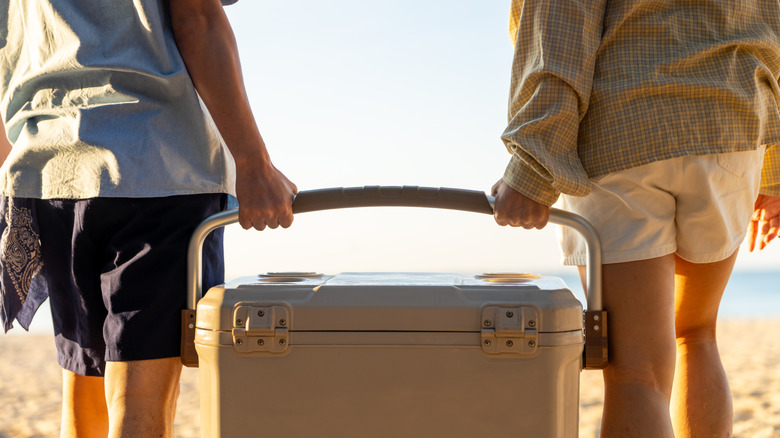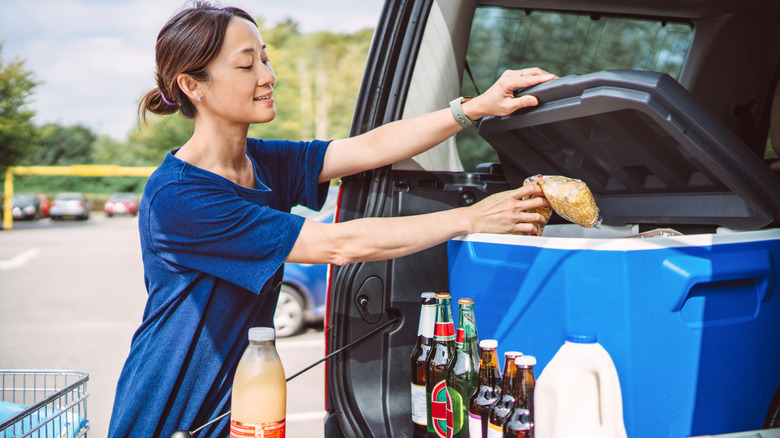How Long Does Food Stay Safe To Eat In A Cooler?
Coolers are probably one of the greatest inventions in history. From preserving freshly purchased groceries to carrying a delicious meal to enjoy on the beach, coolers make everything, well, cooler. Just don't expect to keep your items in there forever — there is a time limit, though it does vary depending on the outside temperature and type of food. Keeping food chilled is a non-negotiable when it comes to preventing bacterial growth. When food is between the temperatures of 40 and 140 degrees Fahrenheit, bacteria can thrive and grow at a quick pace, per the USDA. To stop this from happening, keep your food below 40 degrees as much as possible.
If you're making a grocery trip and buying perishable foods, bring a cooler and some ice packs if it'll be more than half an hour before those items make it to your fridge or freezer. Perishable food that's packed in a cooler to be used throughout the day should be returned to the cooler within one hour if the outside temperature is 90 degrees Fahrenheit or more, or within two hours if the temperature is below 90 degrees Fahrenheit. It also wouldn't be a bad idea to put your food back in the cooler as soon as you're done with it, just in case. The time food stays good in a cooler is also dependent on how well the cooler is filled and what it's filled with. Making sure your cooler is expertly packed is a great way to avoid a major food storage mistake.
Tips and tricks for packing a cooler
Packing a cooler is (or should be) more than just throwing random food items inside and heading out the door. Keep in mind that any ready-to-eat food or items that gets eaten raw should be kept away from any meat and poultry. The best thing to do is to keep these perishables in a separate cooler, but if that isn't an option, make sure it's kept in an airtight container or bag and placed as far away from the other food as possible. If you're planning on taking drinks, keep them in a different cooler or toward the top. Beverage coolers get opened more frequently, and keeping the lid closed will keep the food inside a cooler colder longer.
Another trick is to keep your cooler full. A full cooler will contain the cold air better than a half-empty one. If you don't have that much perishable food, pack non-perishable food in there or add more ice to keep the temperature low. A few extra steps you could take to really ensure your beloved ice cream is staying frozen in your cooler are to keep it shaded for extra insulation or toss an appliance thermometer inside so you always know exactly how cold it is in the container. If you don't have an appliance thermometer, they're available on Amazon as a 2-Pack Refrigerator Thermometer set, and can be used in a cooler or at home to monitor your food temperature safety. If you treat packing your cooler like an epic game of Tetris, you're sure to have some delicious (and safe) meals on the go.

